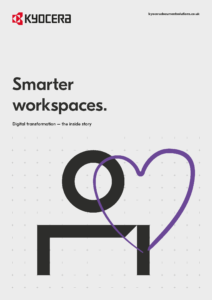 Until recently digital transformation efforts tended to focus mainly on creating new channels of interaction with customers to improve their experience. However, once they have completed that exercise, organisations often realise that their current infrastructure, policies and procedures lack the agility, flexibility and innovation needed to support the transformation.
Until recently digital transformation efforts tended to focus mainly on creating new channels of interaction with customers to improve their experience. However, once they have completed that exercise, organisations often realise that their current infrastructure, policies and procedures lack the agility, flexibility and innovation needed to support the transformation.
The logical progression is to go on to develop what are frequently referred to as “Smarter Workspaces”, leveraging digital technologies to reinvent the way things are done. This can bring a wide range of internal and external benefits; for example, it can lead to innovative new ways of doing things that make operations (e.g. sales order processing, accounts payable management, new employee onboarding, customer help desk) dramatically more efficient.
A variety of factors are encouraging companies to embrace the concept of digital transformation more fully:
- The predominance of digital technology in our personal lives is making employees more demanding, pushing for tools that facilitate collaboration and improve efficiency.
- Artificial intelligence and smart process automation is redefining jobs.
- Managers are realising that work processes built around fragmented tasks compromise efficiency, reducing their organisation’s ability to compete.
However, to be truly effective, a digital workplace transformation must:
- Work across the entire organisation, incorporating all departments, teams and functions.
- Be managed in a strategic way.
- Incorporate regular review and continuous improvement.
In 2018 Kyocera Document Solutions sponsored a study of European businesses to discover how far they had progressed in their journey to digital transformation. This paper is based on an analysis of the key findings, click on the button below to read the full report.

Kyocera have a wide range of high quality, award winning, low and high volume devices that can be easily integrated into any office or organisation.

